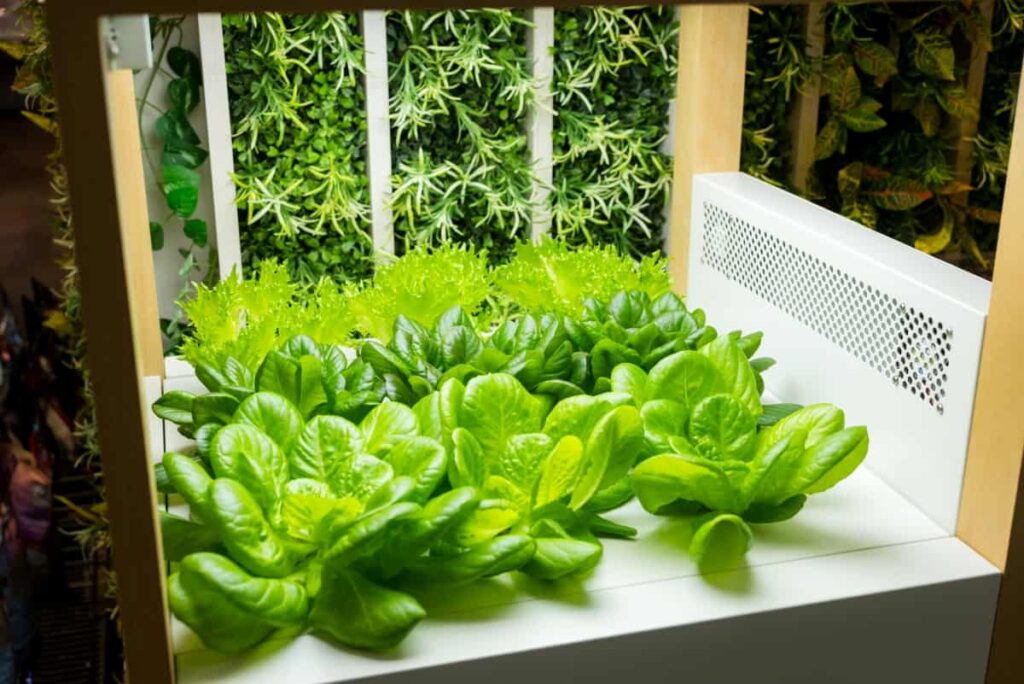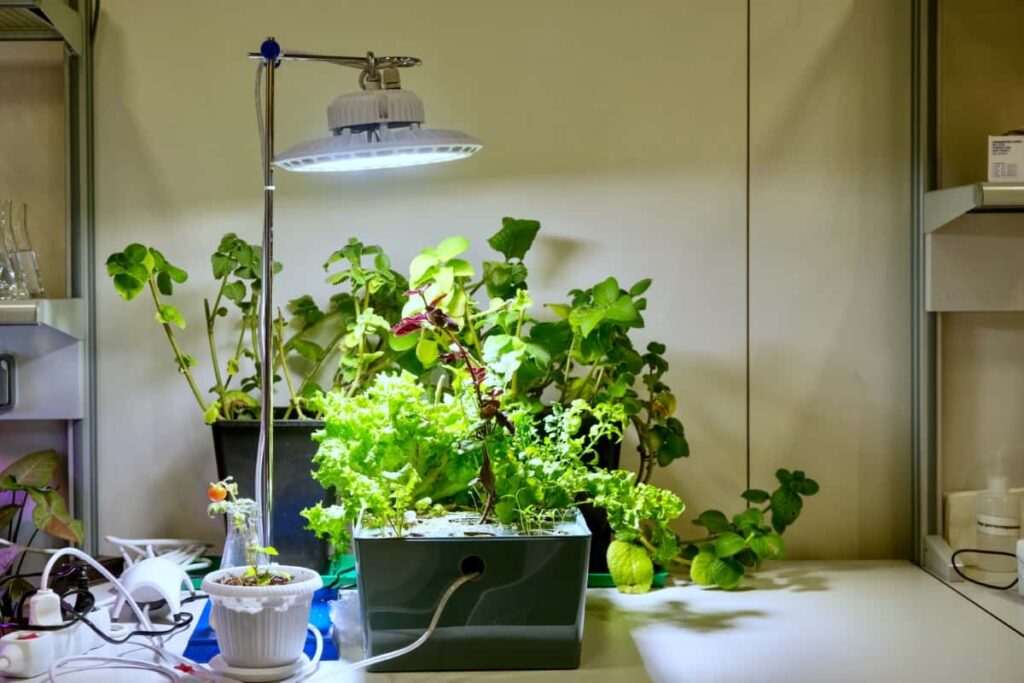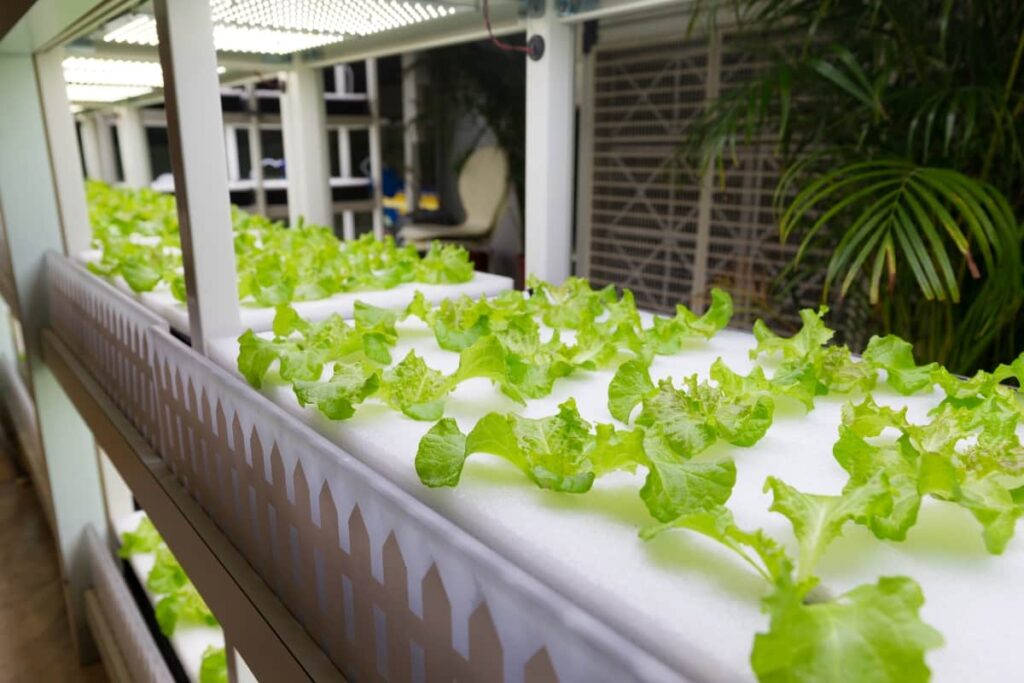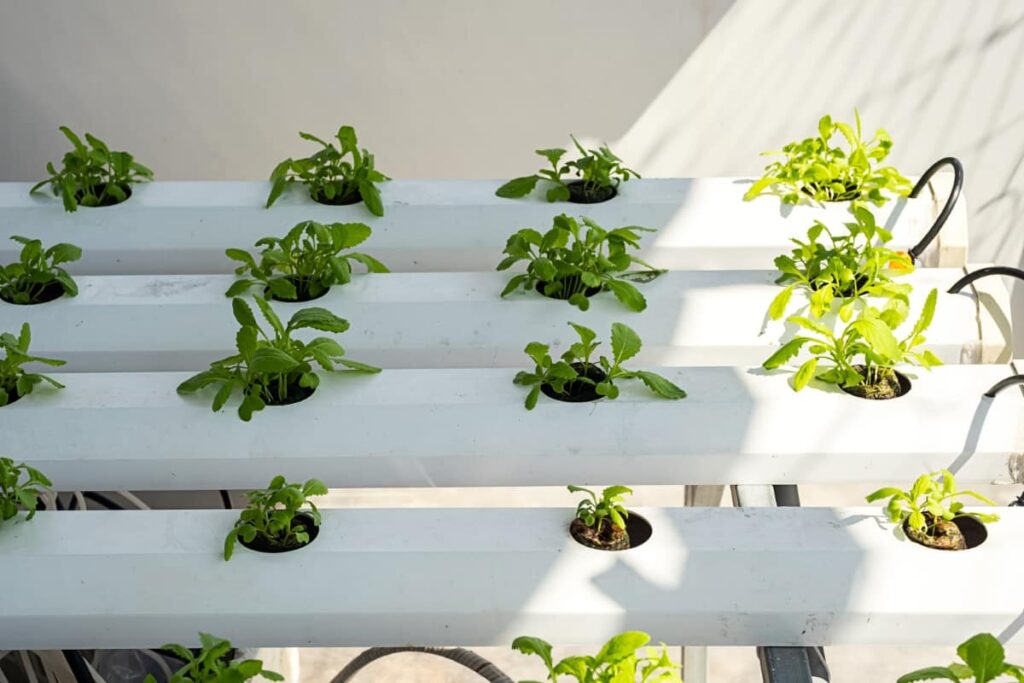Hydroponics, a soilless farming method, is revolutionizing urban apartment gardening by enabling efficient plant cultivation in limited spaces. This innovative approach to gardening allows city dwellers to grow plants indoors using nutrient-rich water. It’s an ideal solution for those keen on gardening but constrained by the lack of traditional garden space. Hydroponics in urban settings offers numerous benefits, including space efficiency, less water usage, and the ability to grow fresh produce year-round.

Understanding how hydroponics works is crucial for beginners interested in setting up their systems at home. This guide will explore the steps to create a homemade hydroponic system step by step, focusing on simplicity and accessibility for those new to hydroponics.
Hydroponics in Urban Apartment Gardening
Benefits of Hydroponics for Urban Apartment Gardening
Hydroponics offers significant advantages for urban apartment gardening, making it an increasingly popular choice. One of its key advantages lies in its space-efficient design, enabling the cultivation of a greater number of plants within a smaller area than conventional soil-based gardening methods. This method is particularly advantageous for those living in apartments with limited space. Additionally, hydroponic systems require less water than soil-based gardening, as the water can be recycled within the system.
This not only conserves water but also makes gardening more sustainable. Hydroponics also promotes faster plant growth and potentially higher yields, as plants can directly access nutrients in the water, leading to more efficient nutrient uptake. Moreover, this method reduces the risk of soil-borne diseases and pests, which is a common challenge in traditional gardening. However, it’s important to be aware of the disadvantages, such as the initial setup cost and the need for constant monitoring and maintenance.
Choose the Right Hydroponic System for Apartment Gardening
Selecting the appropriate hydroponic system is a crucial step in urban apartment gardening. There are various systems available, each suited to different types of plants and space constraints. Several popular hydroponic systems to consider are the wick system, which is well-suited for beginners because of its simple operation and minimal upkeep; the deep water culture system, ideal for water-demanding plants; and the nutrient film technique, a suitable choice for cultivating leafy greens and herbs.
When choosing a system, consider factors like available space, the type of plants you wish to grow, and your level of experience with hydroponics. It’s essential to select a system that aligns with your gardening goals and the conditions of your apartment.
Set Up a Hydroponic System in an Urban Apartment
Setting up a hydroponic system in an urban apartment involves several key steps. First, choose a location in your apartment that receives adequate light, as light is essential for plant growth. If you have insufficient access to natural light, contemplate employing artificial grow lights. Next, assemble the elements of your selected hydroponic setup, which usually consists of a reservoir for the nutrient solution, a cultivation tray, a water circulation pump, and the inclusion of grow lights.
In case you missed it: Exploring the Potential of Hydroponic Farming in the Philippines

Ensure the system is stable and securely positioned to prevent any accidents. Next, prepare the nutrient solution, which will feed your plants. The solution must be correctly balanced in terms of pH and nutrient levels. Finally, introduce your plants to the system, ensuring they are adequately supported and have access to the nutrient solution.
Select Suitable Plants for Hydroponic Apartment Gardening
Leafy greens like lettuce, spinach, and kale are excellent choices due to their relatively simple growing requirements and quick harvest times. Herbs such as basil, cilantro, and mint are also well-suited for hydroponic systems and can add fresh flavors to your cooking. For those seeking more variety, tomatoes, strawberries, and peppers are also viable options, though they may require more care and attention.
When selecting plants, consider factors like their growth habits, light and nutrient requirements, and the space available in your system. Opting for plants that match your gardening skills and lifestyle will help ensure a rewarding and successful hydroponic gardening experience.
Nutrient Management in Hydroponic Apartment Gardening
Effective nutrient management is a cornerstone of successful hydroponic gardening in apartments. The nutrient solution, serving as a soil substitute, must maintain an appropriate nutrient balance crucial for plant growth, encompassing nitrogen, phosphorus, potassium, and various trace elements. Periodically assess and adjust the pH level of this solution, striving for a pH range of 5.5 to 6.5, which optimizes nutrient absorption.
In case you missed it: How to Grow Lettuce and Salad Mix in Hydroponics: A Step-by-Step Guide

Employ a conductivity meter to monitor nutrient concentration and replenish as needed to uphold plant well-being. Furthermore, it’s vital to periodically replace the nutrient solution to prevent salt accumulation and the buildup of harmful substances. Effective nutrient management guarantees the provision of essential growth elements to your plants, resulting in healthier plants and improved yields.
Lighting Considerations for Indoor Hydroponic Gardens
Lighting plays a critical role in indoor hydroponic gardens, especially in urban apartments where natural light may be limited. The type and intensity of light significantly influence plant growth and development. If your apartment doesn’t receive enough natural sunlight, supplement it with grow lights. LED grow lights are widely favored for their energy-efficient nature and their ability to offer a diverse light spectrum.
Light exposure should imitate the natural daylight cycle, typically requiring approximately 14 to 16 hours of light daily for optimal growth of most plants. Positioning the lights correctly is also crucial; they should be placed close enough to the plants to be effective but not so close as to cause heat damage. Regularly adjust the position of the lights as your plants grow to ensure even light distribution. By managing lighting conditions effectively, you can create an optimal environment for your hydroponic garden to thrive.
Water Management in Hydroponics for Apartments
Efficient water management is vital in hydroponic systems, especially in apartment settings. In hydroponics, water acts as the lifeblood, delivering nutrients directly to plant roots. It’s crucial to maintain a clean, adequately oxygenated water supply to prevent root diseases. Regularly check the water level and top it up as plants consume it.
Also, monitor water temperature, keeping it around 65-75 degrees Fahrenheit to optimize nutrient uptake and plant health. Utilizing a water pump and air stones can help in oxygenating the water, ensuring healthy root systems. Remember, the quality of water in hydroponics directly affects plant health, making its proper management a key aspect of successful apartment gardening.
Troubleshoot Common Issues in Hydroponic Apartment Gardens
In hydroponic apartment gardens, common issues include nutrient imbalances, inadequate lighting, and pest infestations. Nutrient-related problems often manifest as discolored or stunted plant growth, necessitating adjustments in nutrient concentration and pH levels. Lighting issues, either too much or too little, can hinder plant development; thus, ensure adequate and consistent light exposure. Pests, although less common in hydroponics, can still occur. Addressing these issues promptly can ensure the smooth running and success of your hydroponic garden.
In case you missed it: A Comprehensive Guide to Understanding the Working Model of Hydroponic Farming

Conclusion
Hydroponic gardening in urban apartments offers an innovative and sustainable way to grow plants efficiently in limited spaces. By understanding and managing aspects like water, nutrients, and lighting, along with troubleshooting common issues, enthusiasts can enjoy a thriving garden that brings the joy of gardening into the heart of city living. With hydroponics, even the smallest apartment can become a lush, green haven, providing fresh produce and a connection to nature.
- Management Pests and Diseases in Your Cotton Field
- Sheep Farming Business Plan for Beginners
- Aquaponic Farming at Home: A Step-By-Step Guide
- Profitable Village Farming Business Ideas in 2024
- High-Yield Aquaculture: Fast-Growing Fish for Farming
- Effective Fish Pond Construction Techniques for Beginners
- Irrigation and Water Management in Pineapple Farming
- Blossom to Harvest: Mastering Flowering and Pollination in Papaya Farming
- Pig Fattening Essentials: From Selection to Sale for Beginners
